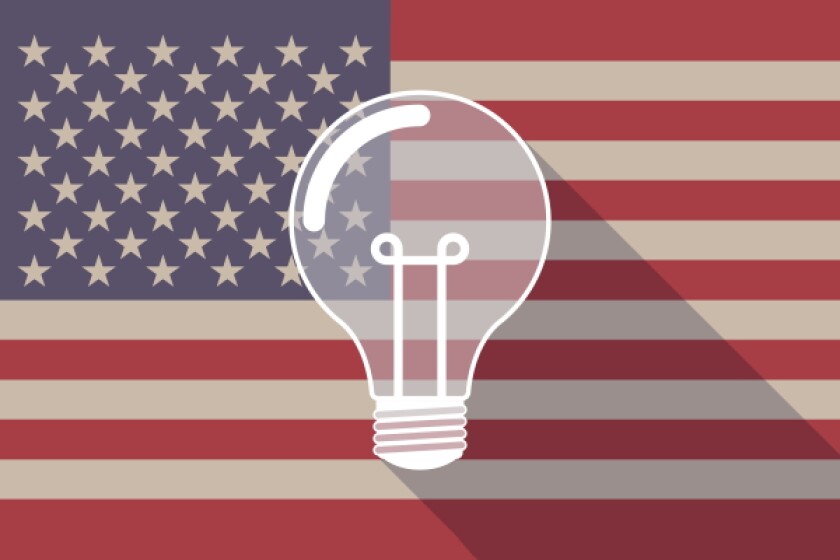It’s been more than 10 years now since Congress enacted the America invents Act to improve patent quality.
Most pundits predicted that the most important change would be the shift to a first-to-file system from a first-to-invent system. Hardly anyone paid attention to the new type of proceeding called the inter partes review (IPR) that would replace the existing inter partes re-examination.
This lack of attention was understandable. Despite the numerous similarities between reexams and IPRs, the former was not a resounding success, and there was no reason to suspect that its replacement would fare any better.
IPR popularity
But IPRs became wildly popular. The number of IPR petitions filed grew from 17 in 2012, the first year of availability, to a peak of 1,812 in 2017 and then levelled off to an annual average of 1,500.
So far, nine years in, 12,607 petitions have been filed at the Patent Trial and Appeal Board (PTAB). By comparison, just 1,919 requests for reexam were filed during the system’s 13-year existence.
So why did IPRs become so popular when their reexam counterparts flopped?
Many would claim that IPRs’ high ‘kill rate’ was the main factor. In the early years, 72% of final written decisions (FWDs) invalidated all instituted claims and 15% invalidated some of the instituted claims, representing an 87% invalidity success rate.
But that can’t be the full story. Reexam also had a high invalidity rate of 94% – 34% of all challenged claims were cancelled or disclaimed and 60% of the challenged claims were changed.
Besides, the IPR invalidity rate is coming down. USPTO statistics showed that the invalidity rate for 2020 was 62% for all instituted claims and 18% for some of the instituted claims.
The institution rate may be another reason for IPRs’ popularity. Similar to the invalidity rate, however, the institution rate started out high at 87% in 2013 but gradually dropped to 56% by 2020.
Reexam grant rates, on the other hand, started out at 95% and stayed there.
Where IPR stands out over reexam is time to the final decision. Although reexams are meant to be handled “with special dispatch” by the USPTO, the overall median pendency for reexam (filing date to certificate issue date) was 39.6 months and the overall average pendency was 44.2 months.
By contrast, every IPR has to be completed within 12 months from the date of institution, with a six-month extension for good cause, under the AIA.
Given that it takes an average of 30 months for a district court patent case to get to trial, IPR affords the defendant in a district court litigation an opportunity to resolve the invalidity issue before district court trial.
There are other significant differences between IPR and reexam that may explain the former’s rising popularity apart from the time to the final decision.
The creation of the PTAB, comprised mostly of former patent litigators, to review IPRs could have made practitioners more willing to use the IPR proceeding.
The availability of discovery in the IPR proceeding such as mandatory initial disclosures, document production and deposition testimony may have been a contributing factor, as it has turned the IPR into a truly adversarial process.
The cost could also have been important. Patent litigation typically costs several million dollars per case, whereas IPRs cost several hundred thousand dollars.
Perhaps, it is the combination of all these factors that made IPRs popular with defendants in district court litigation.
PTAB pushback
As much as IPRs became popular with defendants, however, they became loathed by patent plaintiffs and owners.
Patent owners’ sentiment towards IPR was probably best summed up in the comments of Randall Rader, then the chief judge of the Court of Appeals for the Federal Circuit, who called the PTAB a “death squad” in a newspaper interview.
The first pushback against the PTAB came in the form of criticism against “serial petitions”.
Patent plaintiffs complained that defendants gained an unfair advantage by filing one IPR petition after another against the same patent.
They also complained that defendants engaged in “gang-tackling”, a practice of several defendants filing separate petitions against the same patent.
Defendants responded that the word limit for each petition necessitated filing more than one petition against the same patent when they had to defend against multiple claims. They also pointed out that when a patent plaintiff sued multiple defendants with the same patent, each defendant had a right to file its own IPR under the AIA.
The persistent controversy, however, led to the PTAB’s commissioning of an internal study in 2017. Some of the key findings were that 84.8% of patents were challenged by a single petitioner, 87.2% of patents challenged at the PTAB were by one or two petitions, and 95% of the petitions were filed in a given petitioner’s first round.
Without concluding whether these findings showed the existence of a widespread serial petitions problem, the PTAB in 2018 put the General Plastic factors into its Trial Practice Guide, to be considered when dealing with multiple IPR petitions, and began denying petitions it deemed serial petition attempts under these factors.
Although it is not clear whether there existed any widespread serial petition problem in the first place, the PTAB’s subsequent study found that, after the issuance of the General Plastic guideline, attempted serial petition rate dropped from the high of 7% in 2016 to 2% in 2020.
Along came NHK-Fintiv
The second significant change was discretionary denial under Section 314a in Title 35 of the US Code.
By 2017, close to 85% of all patents in IPRs had a parallel district court litigation.
The courts often stayed the parallel litigation if the IPR was instituted on the patent(s) in suit, leading patent owners and defendants to fight hard over institution.
Then, the PTAB issued a precedential decision in NHK Springs in May 2019 to deny institution of an IPR on the basis that the trial in the parallel district court proceeding was scheduled to take place prior to the statutory due date for the FWD.
The PTAB reasoned that it would be a waste of its resources if the district court were to make the invalidity finding before the PTAB panel could issue a FWD.
Defendants criticised the NHK Springs decision on the grounds that the district court trial date was often subject to change and said court would often stay the parallel district court litigation pending the resolution of the IPR proceeding if instituted.
Nonetheless, in May 2020, the PTAB consolidated factors from NHK Springs with other similar PTAB cases and came up with a list of factors, referred to as Fintiv factors, for deciding discretionary denial.
Under Fintiv, the PTAB denied 84 petitions in 2019, 167 in 2020 and 105 through September 2021. Combining them with discretionary denials with General Plastic denials, the numbers go up to 121 in 2019, 201 in 2020 and 136 through September 2021.
Restoring the AIA
Several defendants pointed out that a significant percentage of institution denials were based on procedural grounds rather than on merits as a result of Fintiv.
They complained that the AIA was enacted to allow defendants to contest the validity of patents efficiently and expeditiously through IPR, and the PTAB’s discretionary denial practice was contrary to that purpose.
Recently, senators Patrick Leahy and John Cornyn introduced the Restoring the America Invents Act (RAIA).
It has several provisions that deal with the Arthrex decision and expand the scope of IPR, but the key provision is a legislative override of Fintiv.
The RAIA seeks to take away the current Fintiv discretionary denial from the director by requiring that “a petition that meets the requirements of this chapter shall be instituted”. The director would no longer be able to use Fintiv factors to deny institution of an otherwise meritorious petition.
It is an open question whether the RAIA will pass. Patent owners, defendants and their respective allies have already staked out their positions for and against the act.
The spirit of cooperation that made the passage of the AIA possible 10 years ago is hard to find this time around.
Robust patents needed
If we step back and ask why patent owners and defendants fight so hard over IPRs and other post-grant reviews, the answer comes down to patent quality.
Many defendants are willing to pay a reasonable price for valid patents that cover their products and services. They are not willing to do so, however, when faced with low quality patents.
On the other hand, many patent owners resent the fact that the patents they obtained after a considerable sum of money and time are now subject to IPRs and post-grant reviews.
Once a patent issues, it comes with presumption of validity and administrative correctness.
IPRs unceremoniously set aside such protection and expose their patents to the danger of being invalidated 60% of the time.
It costs several hundreds of thousands of dollars to defend patents in the IPR. Adding insult to injury, should the patent owner lose, the USPTO is not going to refund all the application fees and maintenance fees paid by the patent owner.
The real issue here is that a patent issued by the USPTO should be able to withstand post-grant review.
As the statistics show, a typical patent put in IPR cannot, at least 60% of the time.
What is the solution? Should a patent application go through IPR-type scrutiny during regular examination?
Certainly, a more thorough prior art search and examination by multiple examiners could bring a regular examination closer to the IPR.
Some argue that doing so would be an inefficient use of USPTO resources in light of the fact that only 3% of patents ever get litigated.
Others argue that the more cost-efficient way is to put off examination of any patent altogether until it is asserted in litigation, essentially turning it into a utility model.
Whatever the solution may be, the conflicts between patent owners and defendants will likely continue until the issue of patent quality is addressed.
Ken Korea is a principal at Colev Law in Silicon Valley.











